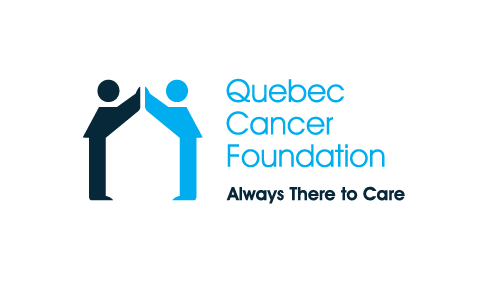Side effects of the primary immunotherapy treatments
Immunotherapy treatments in oncology can have side effects that are significantly different from those of other cancer treatments such as chemotherapy or radiotherapy.
In Québec, oncology patients have access to a tool that allows them to monitor their side effects. Dubbed the Passeport en oncologie (oncology passport), this tool serves as a calendar, provides a summary of available resources and can be used to monitor therapy side effects. Practitioners strongly recommend its use. The passport is usually given to patients when they first visit an oncology clinic, but it can also be ordered online.
Side effects of immune checkpoint inhibitors
Checkpoint inhibitors are the specific immunotherapy medications most often used in oncology. They can, however, have side effects associated with the immune system’s reaction; these can sometimes be excessive. The impacts can include inflammation of certain organs in the body as well as autoimmune reactions (where the immune system attacks healthy cells after having mistakenly identified them as foreign cells).
And while such side effects may be mild and reversible, they should never be taken lightly. Patients who undergo immunotherapy to treat a cancer must be informed of possible side effects as well as of the importance of quickly notifying their care team in the event of a problem; the latter may need to react quickly, depending on the severity of the symptoms.
Certain organs, including the skin, the digestive system, the lungs and the endocrine glands are more sensitive to immunotherapy. Negative side effects can occur at any time during treatment and in some cases, only present once the therapy is completed or even months down the road. These negative effects do not necessarily touch everyone who undergoes immunotherapy, nor do they impact everyone to the same degree. Also, the presence or severity of side effects is not an indication of the therapy’s effectiveness or lack thereof.
Side effects are often associated with the specific medication administered. While rare, some side effects can be permanent. The main side effects of immune checkpoint inhibitors are:
- fatigue;
- skin ailments, including red spots, rash (eruptions) and itchy patches;
- gastrointestinal symptoms such as nausea or vomiting, loss of appetite, diarrhea and abdominal pain (colitis);
- endocrine disorders, among them fatigue, weight loss, excessive thirst or appetite, frequent or excessive miction (urination);
- respiratory systems issues, including shortness of breath, cough, difficulty breathing;
- neuropathies, such as numbness and tingling ;
- other symptoms (generally less frequent), including:
- headaches,
- muscle pain or weakness,
- painful or swollen joints,
- inexplicable fever,
- bruises,
- vision problems (loss of vision, inflammation of the eye).
Management and care related to side effects of immune checkpoint inhibitors
While most side effects are mild, some can develop into more serious and even life-threatening issues. In such cases, emergency interventions may be necessary. The most important and effective method of controlling the side effects of checkpoint inhibitor therapy is early detection combined with rapid action. Patients undergoing this type of immunotherapy must notify the oncology team immediately should existing systems worsen or new symptoms appear.
The following basic principles apply when negative side effects associated with checkpoint inhibitors need to be controlled:
- Relatively mild or moderate side effects: treat the emerging symptoms while continuing the immunotherapy treatments.
- Moderate but persistent side effects: treat the emerging symptoms and temporarily interrupt the immunotherapy until the side effects have diminished or disappeared.
- Serious or very serious side effects: cease the treatment. In certain circumstances, notably if the symptoms are quickly resolved according to established criteria, resuming immunotherapy could be considered. Consult appropriate experts, depending on the organ impacted. Possibility of intravenous or oral treatment with corticosteroids or other immunosuppressors (medications that decrease the impact of immune system activity). Patients often need to be hospitalized.
Patients are urged to immediately contact the care team or make their way to the ER if they present any of the following symptoms:
- Diarrhea – more than 6 loose stools per day, accompanied by secretions, blood or abdominal pain
- Cough or persistent fever
- Sudden shortness of breath
- Red spots or itchy patches over at least one-third (30%) of the body
- Red eyes, blurred vision
- Any other new or unusual symptom
Side effects of bispecific antibodies (Blinatumomab)
Blinatumomab is used to treat acute lymphoblastic leukemia. Its side effects, unlike those experienced by some chemotherapy patients, are usually moderately severe to severe, but well-tolerated by most patients. They generally present early in the first week of the initial treatment cycle, and become mild and reversible once the treatment ends. On rare occasions, serious side effects can appear, in which case they must be addressed quickly.
Given these potentially serious impacts, hospitalization in a special oncology ward may be necessary for patients at the start of the first two treatment cycles. As for the remainder of the treatment, close monitoring by the oncology team or hospitalization is recommended at the start of all remaining cycles. This recommendation also applies should treatment be resumed following an interruption of 4 hours or more. If treatment can and is to be given at an outside clinic, it must be administered by an infusion pump. Strict precautions must be taken when changing infusion tubes and bags, particularly to avoid dosage errors.
The most frequent side effects are as follows.
- Immune system disorders: cytokine release syndrome, which occurs when the immune system reacts to the infusion by generating a vast quantity of cytokines (substances produced in reaction to pathogens). This usually occurs during the first days of the first 2 treatment cycles. The symptoms are:
- fever and chills;
- hypotension (low blood pressure);
- muscle and joint pain;
- vertigo;
- headaches;
- skin rash (eruptions);
- trouble breathing.
In order to prevent cytokine release syndrome, a cortisone-based medication (dexamethasone) is administered prior to the onset of each treatment cycle, as well as whenever the dose is increased or if treatment is resumed after an interruption of 4 hours or more.
- Bacterial, fungal or viral infection.
- Febrile neutropenia (decrease in the number of neutrophils [white blood cells] present in the case of a fever or other signs of an infection).
- Blood disorders such as anemia (decrease in red blood cells), neutropenia (decrease in neutrophils [white blood cells]) and thrombocytopenia (decrease in platelets).
- Gastrointestinal symptoms like diarrhea and nausea.
- Pancreatitis, the symptoms of which include intense abdominal pain, nausea, vomiting and diarrhea. Symptoms can be severe and the treatment team must be advised immediately.
- Tumor lysis syndrome, i.e., the rapid destruction of cancer cells at the onset of treatment. This risk is particularly high in cases of acute leukemia. Preventive measures taken to avoid this side effect consist of administering a medication (Allopurinol) and intravenous hydration.
- Musculoskeletal problems and more specifically, back and bone pain.
- Nervous system issues: these are frequent, and generally touch around half of the persons treated. They usually appear during the first few days after the medication’s administration. Some of them, namely the most severe, must be addressed immediately. The symptoms of nervous system issues are:
- headaches;
- trembling;
- dizziness and loss of balance;
- confusion;
- blurred vision;
- drowsiness;
- fainting;
- convulsions.
- Skin problems and more specifically, a rash
Side effects of intravesical therapy (BCG)
The following side effects can appear during the 2-day period following each treatment cycle:
- Frequent need to urinate
- Blood in the urine
- Difficulty fully emptying bladder
- Mild to moderate lower back or lower stomach pain while urinating
- Skin irritation in the genital area
- Slight fever (between 38° and 38.3°C)
- Symptoms akin to those in the case of a flu (fatigue, chills, headache and sore throat)
These side effects will go away on their own during the first week following treatment. There may sometimes be more severe side effects calling for a medical intervention.
A patient with the following symptoms should contact the treatment team or make his way to the ER:
- Difficulty or inability to urinate
- Presence of significant amounts of blood in the urine or an increase in the amount of such blood (as opposed to a decrease)
- Persistent cough (that does not go away)
- Fever over a period of 2 days
Side effects of CAR T-cell therapy
CAR T-cell therapy can have major side effects. The majority of patients, in fact, will manifest severe side effects, with two of these likely to appear over the short term. Firstly, patients can present with cytokine release syndrome in the 3- to 9-day period after receiving an injection of modified lymphocytes (CAR T-cell). These lymphocytes can cause the immune system to react and produce a large quantity of cytokines (substances produced in response to pathogens).
The symptoms of this syndrome are:
- fever and chills;
- hypotension (low blood pressure), muscle and joint pain and vertigo;
- headaches;
- skin rash (eruptions);
- trouble breathing.
The syndrome can also provoke renal, liver, lung or heart failure.
Secondly, neurological side effects can also appear 5 days after the administration of CAR T-cells. These can manifest as convulsions, tremors, confusion, difficulty speaking or fainting.
Also, the chemotherapy given as a preliminary treatment often provokes a severe decrease in red blood cells, platelets and white blood cells. The result? An increased risk of suffering from severe infection.
Patients who undergo CAR T-cell treatment must subsequently be hospitalized in a special oncology ward so that treatment personnel can monitor them as needed. Oncologists and other specialized doctors and health care personnel must be adequately trained and have access to the necessary resources to optimally monitor and care for these patients.
Most frequent side effects of Alpha interferon and Interleukin-2
- Pseudo-flu symptoms: fever, chills, muscle pain, headaches
- Fatigue
- Gastrointestinal symptoms: decreased appetite, diarrhea, nausea and vomiting, skin rash
- Blood disorders: anemia (decrease in red blood cells), neutropenia (decrease in neutrophils [white blood cells]) and thrombocytopenia (decrease in platelets)
- Depression
There may also be more severe symptoms, but only rarely. These could include chest and stomach pains, persistent cough or fever (for more than 24 hours) and sudden episodes of breathing difficulties. Patients with these symptoms must be seen rapidly. They will need to contact a member of the treatment team immediately or make their way to the ER.
Specific mention – Interleukin-2
High doses of Interleukin-2 could provoke severe issues such as pulmonary edema, renal failure, generalized swelling leading to severe weight gain and cerebral edema. Because of these potentially serious side effects, hospitalization in a special oncology ward is necessary to allow for continuous monitoring duration of the medication’s administration.
Learn more about managing side effects.
Questions? Speak with a nurse at our Info-cancer Hotline at 1-800-363-0063.
Sources
Institut National du Cancer – Médecine de précision : thérapies ciblées et immunothérapie spécifique
Canadian Cancer Society – Immunotherapy
American Cancer Society – Immunotherapy
La ligue contre le cancer – L’immunothérapie
National Cancer Institute – Immunotherapy to Treat Cancer
Guides prepared for patients:
European Society for Medical Oncology – Les effets secondaires liés à l’immunothérapie
Société leucémie et lymphome Canada – L’immunothérapie
CHUM – L’immunothérapie pour traiter le cancer
All of the sources used to prepare this document can be consulted by communicating with the Quebec Cancer Foundation.































